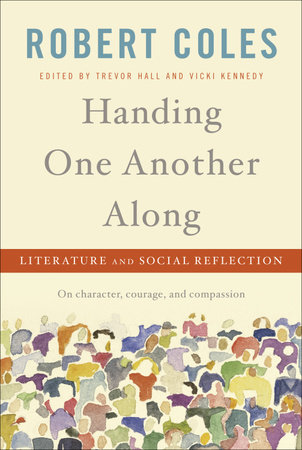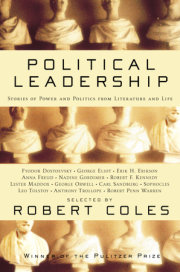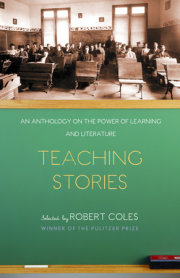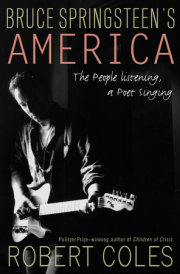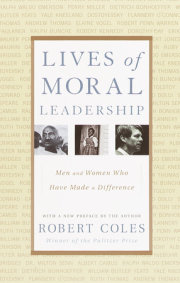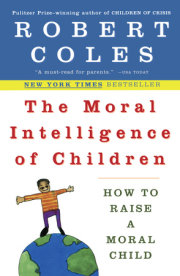Chapter One
James Agee:
A Biting Irony
Let us start with an introduction to James Agee, born in Knoxville, Tennessee, in 1909. His parents were of different backgrounds. His father, Hugh James Agee, was of Appalachian yeoman stock, basically a workingman, one generation removed from the hollows of the Great Smoky Mountains. His mother was from what would be called today, by some, an upper-middle-class commercial family, and she was well educated. She received various periodicals, including the Atlantic Monthly-she had refinement and aspirations toward culture. When their first child, James (or Rufus, as he was called as a boy), was six years old, his father was killed in an automobile accident-an important moment in James's life. The last thing Agee wrote, the quasi-autobiographical novel A Death in the Family, would go on to win a Pulitzer Prize in 1957, although this was two years after his own untimely death, in 1955, from a heart attack suffered in the back of a taxicab; he was on his way to New York Hospital because he had been experiencing chest pains.
Agee's forty-five years proved to be tumultuous: the death of a parent at only six, and by ten or eleven he was sent off to the St. Andrew's School, an Episcopal boarding school in Sewanee, Tennessee, right near the University of the South, run at that time by a monastic Episcopalian order. He lived there for three or four years while his mother was getting her feet on the ground after the death of her husband and was tending to the boy's younger sister.
When Agee was sixteen he left St. Andrew's for Phillips Exeter Academy, in New Hampshire-a fancy private school with a long intellectual tradition. He was a southern boy of a complex background, already in his own way a populist, an earthy, crunchy, idiosyncratic, rebellious-very rebellious-young man. He arrived at the staid New England private school at a time when it was much stiffer and more exclusionary, almost exclusively populated by wealthy East Coast scions of privilege. Within months, this sixteen-year-old youth began an affair with the forty-year-old school librarian, an affair that would last for the two years he attended classes. He was no stranger to that dark brown drink known as bourbon, and he smoked heavily. He also began writing and was soon enough contributing to the Exeter magazine, the Monthly. In no time, he was admitted to the fancy Lantern Club. Upon graduation in 1928, he went to Harvard.
While in Cambridge, at Harvard, he would give some courses his all; others he would ignore, to the point of flunking them. At times, he would just disappear-for days or even longer. He would frequent the Theater District in downtown Boston, where there were burlesque shows, lots of bars, and people who walked the streets, and women ready to take up the acquaintance of those who were interested in doing so. He would spend a lot of time there observing, but also striking up conversations. Back in Cambridge, he wrote feverishly-poetry and short stories, some of which began to be published in the Harvard Advocate. Eventually, he would become president of this undergraduate literary quarterly.
By the time he was ready to graduate, Agee had written a collection of poems, which he sent off for consideration to the Yale Younger Poets award. He won, which led to publication of his book Permit Me Voyage in 1934. During that time he was introduced to I. A. Richards, a distinguished professor of English on the New Haven campus. Richards, in turn, handed Agee on to a former student of his, Archibald MacLeish, who had gone to New York to work for Henry Robinson Luce, the publisher of Time, Life, and Fortune.
MacLeish, a poet who went on to become assistant secretary of state for cultural and public affairs, managed to secure Agee a job at Fortune magazine writing essays on finance and business, but all the while Agee was writing more and more poetry in his spare time. As Luce and his magazine were moving into the Chrysler Building in midtown Manhattan, the legend of James Agee was becoming known to the literary community of Manhattan: the enormously talented writer who drank a lot, slept around, and who would write while listening to Beethoven's Ninth Symphony so loudly and so often that people worried whether the Chrysler Building would withstand the orchestral blasts. He wrote pieces for Fortune on Mohawk rugs, orchids, the Tennessee Valley Authority (a group of dams that, under the aegis of the New Deal, were being built in Agee's home state to harness a river's threatening power of flooding); he wrote on Cuba, as it was ruled by none other than American gangsters in Havana; he wrote an essay on strawberries, which in the 1930s were an aristocratic indulgence for the upper class, and not widely familiar, as they now are to Americans. He also loved the movies, which had not yet become something called "film." Agee desperately wanted to write about the movies, but the top editors were not quite sure they were ready for that in any of the Luce publications. Those pieces would have to wait.
One day in early 1936, Mr. Luce called Agee in and said he had an assignment for him. He wanted Agee to go down to Alabama, find some sharecropping families, spend a few weeks there, then come back and write about them. Agee had become Fortune's ace reporter, the writer who knew how to take complicated social and economic matters and translate them for the businesspeople who needed to understand what was going on in America. At that time, Fortune was, without exception, an extraordinarily well-written magazine.
Agee agreed to go south, and as an afterthought Mr. Luce said, "Maybe get a photographer to go with you, and we'll get some good pictures." This was the 1930s, during the Great Depression, and when Luce said "sharecroppers" he did not have to spell out the qualifying word. What he meant was white sharecroppers; there were plenty of them. Fortune magazine (and, by extension, its readers) were not interested in black sharecroppers. They were interested in white yeomen, in finding out about them and how their experiences might reflect on larger social and economic issues.
What did Agee do before going on this assignment? Well, he didn't start looking at books, at statistics or studies about what he might see in Alabama. Rather, he started remembering courses he had taken at Harvard College, and it occurred to him that one Harvard lecturer had talked about the novelist Daniel Defoe, who in the eighteenth century wrote a book called A Journal of the Plague Year, an epic attempt to tell what happened when the plague hit London in the middle of the previous century. The book was a mix of factuality and evocations of individuals, put together by a novelist who'd created characters so that the reader would understand how it had felt back then: the sights and sounds of an epidemic, of the sick and dying. The dramatic power of storytelling, the intensity of characters stricken by a fatal illness, the concomitant atmosphere-all got worked into a narrative presentation. Agee remembered that book well, and he read it again in preparation for his trip.
Agee was then told by Dwight Macdonald (an important American writer of the earlier part of the twentieth century who started out with Fortune and would go on to found a journal called Politics, an idiosyncratic leftist magazine in the 1940s and '50s) to research the writing of Henry Mayhew. Agee went to the New York Public Library and found out that Henry Mayhew was a London writer, an essayist and journalist of the mid-nineteenth century (a contemporary and friend of Dickens's) who, in essay after essay for a newspaper called the Morning Chronicle, described what he called "the London laboring class" or, at other times, "the London poor." Toymakers, tanners, tailors, milliners, shopkeepers they were called, or men and women who picked up garbage and cleaned floors. These were the people who made a great city work, and what he did was describe their work, their lives, and who they were, with respect and concern, with affection.
Mayhew came from a privileged background; had gone to a private school called Westminster, in London; and was a rebel within his family, among his friends. He was supported (with some mixed feelings) by his father. When he wrote, his objective was to make his reader "feel for these people," as he put it in one of his diary entries. Sometimes when his work was published in the Morning Chronicle and in the books in which these articles were collected, it was joined by illustrations done by George Cruikshank, the great nineteenth-century satirist and illustrator whose work adorned Dickens's writing when it first appeared in newspapers and books. Agee had encountered a connection of the visual to the textual that went back a couple hundred years-back, actually, to the late eighteenth century in France, and had flourished in the nineteenth century in England. Dickens used to say that he waited each week for Mayhew's stories and that they provoked and inspired some of his own writing. Of course, Dickens went one step further, beyond the tanners and jail keepers and factory workers of various kinds, described factually by Mayhew, in his own fictional depictions of these lives. Later on, in this country, the tradition was carried on by writers such as Jacob Riis and his famous How the Other Half Lives and Charles Loring Brace's book The Dangerous Classes of New York. These writers tried to tell us about a similar kind of disparity between themselves, as observers and writers, and those they were observing: the observer and the observed. Lewis Hine began taking photographs, which were often used to illustrate some of these essays. His photographs were of children and factories in Appalachia, and the border states of the South: Virginia, Tennessee, and Kentucky.
By the 1930s, we had the Farm Security Administration (FSA), and we had the whole tradition of documentary photography. One of those documentary photographers would ultimately be Walker Evans, another nonconformist who did not graduate from college. He went to Williams College, among others, for a while, then dropped out, took a fancy to the camera, and became a drinking buddy of Agee's in New York. The two of them finally set out for Alabama in July 1936-a reelection year for Roosevelt, and the first year that the New Deal would be tested by the American voting public.
Agee and Evans went down to Alabama. They ended up in a county located between Montgomery and Birmingham and undertook the chronicle that would eventually become Let Us Now Praise Famous Men. When you pick up this book and open its cover, the first thing you see is not words but pictures of people.
You see first a man with a well-worn suit jacket and a necktie. This is a book whose title, Let Us Now Praise Famous Men, comes from the Apocrypha, which is a book that didn't quite make the Bible. It has an annexed status to the Holy Book (kind of like Radcliffe once was to Harvard). It is no accident that "Let us now praise famous men" is a verse Agee includes in his book. In the photographs you see a man with a necktie and his jacket and then you turn the page and there is a man with overalls. When you meet the people, the homes, the furniture, the outhouses, the shoes, someone harvesting cotton, all through these photographs, you meet fellow American citizens in various stages of their existence and living various shades of that life.
As you begin to find your way into the book, you're given the title, told that the photographs were reproduced through the Farm Security Administration (then part of the Department of Agriculture), told the publisher, offered the dedication, and then, if you skip the foreword written by Walker Evans, you learn that Agee never wrote the article for Fortune. He became so discombobulated, so upset, so engaged, so enraged that he quit the magazine, and he and his wife went to Frenchtown, in the western part of New Jersey, and for months, which turned into several years, he fretted over what we now have as a book.
The first words of the text proper come on page 33 in the Ballantine edition: "Poor naked wretches, wheresoe'er you are / That bide the pelting of this pitiless storm, / How shall your houseless heads and unfed sides, / Your loop'd and window'd raggedness, defend you / From seasons such as these?" That quote is taken from Shakespeare's King Lear. What does King Lear have to do with central Alabama, with its Depression-era brute poverty, with its extreme vulnerability and social marginality? Why King Lear? What is King Lear about? King Lear is about power and deception and betrayal; King Lear is about a family, a father and his daughters; King Lear is about trust and mistrust; King Lear is about patrimony gone awry. Agee is telling us a lot without a single word of his own, drawing on his education and his sensibility, saying, "Folks, I'm gonna try and do justice to this world, boy am I going to try and do justice! I'm going to summon the best I can-yes, even Shakespeare: I'll bring him to nineteenth-century Alabama! I will sweat my words and thoughts and opinions so that you in turn will sweat, so that all of us will sweat about our American patrimony, about what it can mean to people to be an American in this fourth decade of the twentieth century, to be near starvation, to have little if anything."
Copyright © 2010 by Robert Coles. All rights reserved. No part of this excerpt may be reproduced or reprinted without permission in writing from the publisher.

